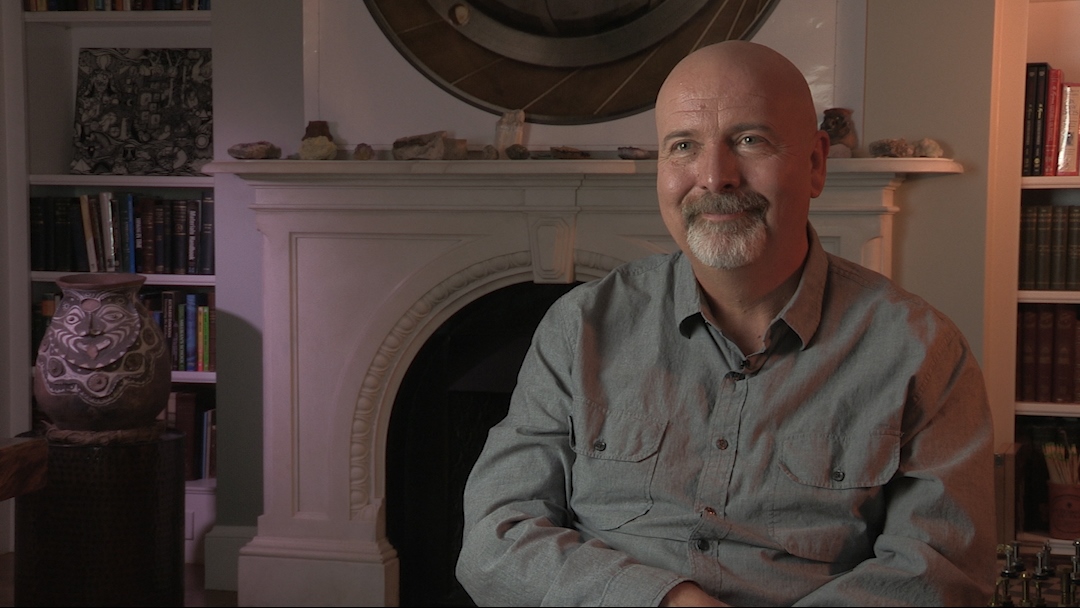NEXT STORY

Proving Amdahl's Law wrong
RELATED STORIES

NEXT STORY

Proving Amdahl's Law wrong
RELATED STORIES


|
Views | Duration | |
|---|---|---|---|
| 101. Calculators and computers are the future | 137 | 01:33 | |
| 102. 'I think I want to do what he does': Alan Kay | 167 | 02:33 | |
| 103. Getting to know people before they were famous | 165 | 03:59 | |
| 104. Meeting Freeman Dyson | 358 | 02:48 | |
| 105. Richard Feynman and Thinking Machines | 463 | 02:17 | |
| 106. Richard Feynman – quartermaster for the stationery | 298 | 01:27 | |
| 107. Neurobiology and fast computing | 172 | 02:17 | |
| 108. How Thinking Machines started | 180 | 03:10 | |
| 109. Proving Amdahl's Law wrong | 326 | 02:24 | |
| 110. Thinking Machines – my second education | 151 | 03:22 |


We just had the ability to start making chips ourselves so we could make very simple computers, and I figured out you could actually make like 64 very simple computers on a single chip, which nobody had ever done before. The idea of putting one computer on a chip was pretty radical, but... so I started designing chips like that and imagining big arrays of these that you could have. A million of these was my initial thought. Later, I scaled it back down to 64,000 out of practicality. But the original idea was you could have a million computers and they would all have the ability to talk with each other and you could use them like neurons and you could use the kind of McCulloch-Pitt's learning algorithms and represent things in the computer.
And so I started working on that, but I never really intended that to be my main project. It was just sort of building a tool to get the main project done, which was AI. But, MIT being what it was, even though I was an undergraduate at first, when I started working on this, and eventually a graduate student, I could still hire all these other... I mean, officially they worked for faculty members, but I would go to Gerry Sussman or Marvin Minsky or something and say, 'I want to hire a UROP student.' And I would get these great MIT students like Brewster Kahle, for example, to come help me design the chips. And I'd get a lot of help from people that were around, like Tom Knight and Guy Steele and Gerry Sussman and everybody did nothing but encourage me and help me and I barely knew how to program, and Richard Greenblatt, who was building the Lisp machine, sat down and taught me about computer architecture, and Tom Knight did.
So there were all these people that, instead of explaining to me how hopelessly ambitious what I was trying to do was, just helped. And so I started building up a pretty big group around me, and then DARPA at that time had people like... Bob Kahn was running it. He started this strategic computing programme. He came by, I told him what I wanted to do. Even though I was just a student, he was like, yeah, we can fund that. And so first he gave money to the AI lab to do it, but then the project started getting more and more expensive, and it became a little bit ridiculous having a student have all these people working for him and spending millions of dollars, when actually I had no real official capacity there. And so eventually I realised I had to start a company on the outside to do it. So that's how Thinking Machines got started: it was just to build this thing that I wanted to use for my thesis, was the original idea.
W Daniel Hillis (b. 1956) is an American inventor, scientist, author and engineer. While doing his doctoral work at MIT under artificial intelligence pioneer, Marvin Minsky, he invented the concept of parallel computers, that is now the basis for most supercomputers. He also co-founded the famous parallel computing company, Thinking Machines, in 1983 which marked a new era in computing. In 1996, Hillis left MIT for California, where he spent time leading Disney’s Imagineers. He developed new technologies and business strategies for Disney's theme parks, television, motion pictures, Internet and consumer product businesses. More recently, Hillis co-founded an engineering and design company, Applied Minds, and several start-ups, among them Applied Proteomics in San Diego, MetaWeb Technologies (acquired by Google) in San Francisco, and his current passion, Applied Invention in Cambridge, MA, which 'partners with clients to create innovative products and services'. He holds over 100 US patents, covering parallel computers, disk arrays, forgery prevention methods, and various electronic and mechanical devices (including a 10,000-year mechanical clock), and has recently moved into working on problems in medicine. In recognition of his work Hillis has won many awards, including the Dan David Prize.
Title: How Thinking Machines started
Listeners: Christopher Sykes George Dyson
Christopher Sykes is an independent documentary producer who has made a number of films about science and scientists for BBC TV, Channel Four, and PBS.
Tags: Thinking Machines, Gerald Sussman, Marvin Minsky, Brewster Kahle, Tom Knight, Richard Greenblatt
Duration: 3 minutes, 10 seconds
Date story recorded: October 2016
Date story went live: 05 July 2017